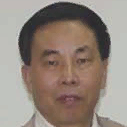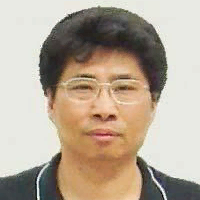International Journal of Image, Graphics and Signal Processing (IJIGSP)
IJIGSP Vol. 3, No. 4, 8 Jun. 2011
Cover page and Table of Contents: PDF (size: 1093KB)
Ergodic Matrix and Hybrid-key Based Image Cryptosystem
Full Text (PDF, 1093KB), PP.1-9
Views: 0 Downloads: 0
Author(s)
Index Terms
Hybrid-key, ergodic matrix, symmetric, asymmetric, entropy, diffusion
Abstract
The existing traditional cryptosystems, such as RSA, DES, IDEA, SAFER and FEAL, are not ideal for image encryption because of their slow speed and ineffectiveness in removing the correlations of the adjacent pixels. Meanwhile chaos-based cryptosystems, which have been extensively used over the past two decades, are almost all based on symmetric cryptography. Symmetric cryptography is much faster than asymmetric ciphers, but the requirements for key exchange make them hard to use. To remedy this imperfection, a hybrid-key based image encryption and authentication scheme is proposed in this paper. In particular, ergodic matrices are utilized not only as public keys throughout the encryption/decryption process, but also as essential parameters in the confusion and diffusion stages. The experimental results, statistical analysis and sensitivity-based tests confirm that, compared to the existing chaos-based cryptosystems, the proposed image encryption scheme provides a more secure means of image encryption and transmission.
Cite This Paper
Xiaoyi Zhou,Jixin Ma,Wencai Du,Yongzhe Zhao,"Ergodic Matrix and Hybrid-key Based Image Cryptosystem", IJIGSP, vol.3, no.4, pp.1-9, 2011. DOI: 10.5815/ijigsp.2011.04.01
Reference
[1]Acharya, B., S. K. Panigrahy, et al. (2009). "Image Encryption Using Advanced Hill Cipher Algorithm." International Journal of Recent Trends in Engineering 1(1): 663-667.
[2]Öztürk, I. and I. Sogukpınar (2005). "Analysis and Comparison of Image Encryption Algorithms." World Academy of Science, Engineering and Technology 3: 26-30.
[3]Zhang, L., X. Liao, et al. (2005). "An image encrypton approach based on chaotic maps." Chaos, Solitions and Fractals 24: 759-765.
[4]Fridrich, J. (1998). "Symmetric ciphers based on two-dimensional chaotic maps." International Journal of Bifurcation and Chaos 8(6): 1259-1284.
[5]Giesl, J., L. Behal, et al. (2009). "Improving Chaos Image Encryption Speed." International Journal of Future Communication and Networking 2(3): 23-36.
[6]Miao, Y., G. Chen, et al. (2004). "A novel fast image encryption scheme based on 3D chaotic baker maps." International Journal of Bifurcation and Chaos 14(10): 3613-3624.
[7]Chen, G., Y. Mao, et al. (2004). "A symmetric image encryption scheme based on 3D chaotic cat maps." Chaos, Solitions and Fractals 21: 749-761.
[8]Guan, Z., F. Huang, et al. (2005). "Chaos-based image encryption algorithm." Physics Letters A 346(1-3): 153-157.
[9]Yang, H., K. Wong, et al. (2010). "A fast image encryption and authentication scheme based on chaotic maps." Communications in Nonlinear Science and Numerical Simulation 15(11): 3507-3517.
[10]Zhao, Y., L. Wang, et al. (2004). "Information-Exchange Using the Ergodic Matrices in GF(2)." Proceedings of the 2nd ACM symposium on Information, Computer and Communications Security ACNS 2004: 347-349.
[11]Zhou, X., J. Ma, et al. (2010). "BMQE system: an MQ euqations system based on ergodic matrix." Proceedings of the International Conference on Security and Cryptography: 431-435.
[12]Diffie, W. and M. E. Hellman (1976). "New Directions in Cryptography." IEEE Transactions on Information Theory 22(6): 644-654.
[13]Runger, G. C. and M. L. Eaton (1992). "Most powerful invariant permutation tests." Journal of Multivariate Analysis 42(2): 202-209.
[14]Lin, S.-Y., C.-S. Chen, et al. (2003). "Tensor product formulation for Hilbert space-filling curves." Proceedings of Parallel Processing 2003, Kaohsiung.
[15]Josef, S. (2000). "Secure digital watermark generation based on chaotic Kolmogorov flows." Security and Watermarking of Multimedia Content II, Proceedings of SPIE, 2000 3971: 306-313.
[16]Miyamoto, M., K. Tanaka, et al. (1999). "Truncated baker transformation and its extension to image encryption." Proceedings of SPIE on Advanced Materials and Optical System for Chemical 3858: 13-25.
[17]Parberry, I. (1996). "Scalability of a neural network for the Knight's tour problem." Neurocomputing 12(1,15): 19-33.
[18]Parberry, I. (1997). "An efficient algorithm for the Knight's tour problem." Discrete Applied Mathematics 73(3,21): 251-260.
[19]Lian, S., J. Sun, et al. (2005). "A block cipher based on a suitable use of the chaotic standard map." Chaos, Solitions and Fractals 26: 177-129.
[20]Ismail, I. A., M. Amin, et al. (2010). "A digital image encryption algorithm based a composition of two chaotic logisitc maps." International Journal of Network Security 11(1): 1-10.
[21]Anonymous (1998, 10/09/98). "Introduction to public-key cryptography." [online]. Available at http://docs.sun.com/source/816-6154-10/.
[22]Menezes, A. J., P. C. v. Oorschot, et al. (1996). Handbook of Applied Cryptography. United States, CRC Press: 816.
[23]Zhao, Y., S. Pei, et al. (2007). "Using the Ergodic Matrices over Finite Field to Construct the Dynamic Encryptor." Journal of Chinese Computer Systems 2007(11): 2010-2014.
[24]Shannon, C. (1949). "Communication theory of secrecy systems." Bell System Technical Journal 28(4): 656-715.
[25]Jormakka, J. (2004). "Symmetric and asymmetric cryptography overview." from http://www.netlab.tkk.fi/opetus/s38153/k2003/Lectures/g33symm_asymm_crypto.pdf.
[26]Ye Guodong. (2010). "Image scrambling encryption algorithm of pixel bit based on chaos map." Pattern Recognition Letters 31 :347–354



